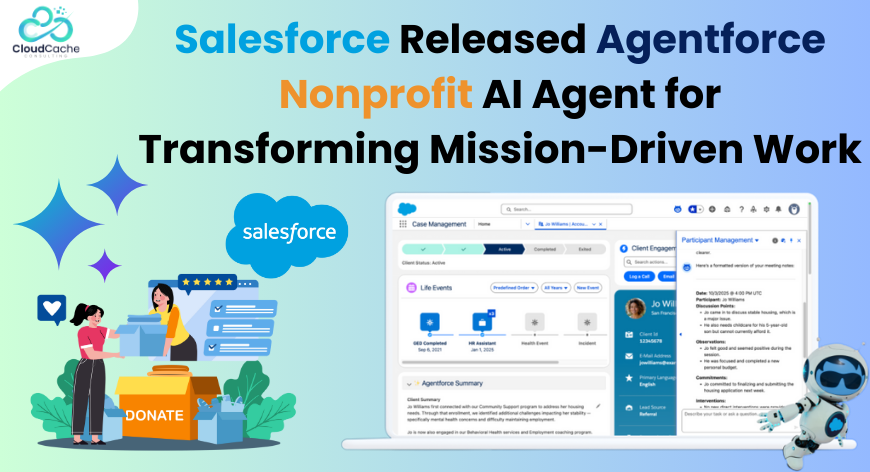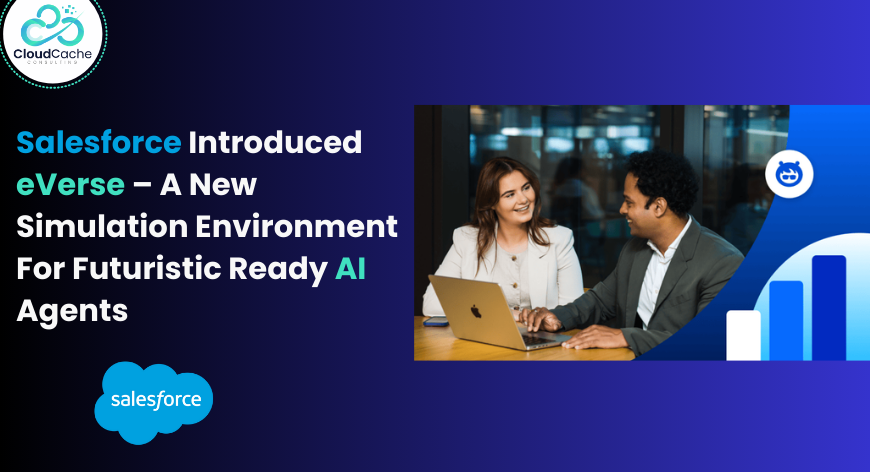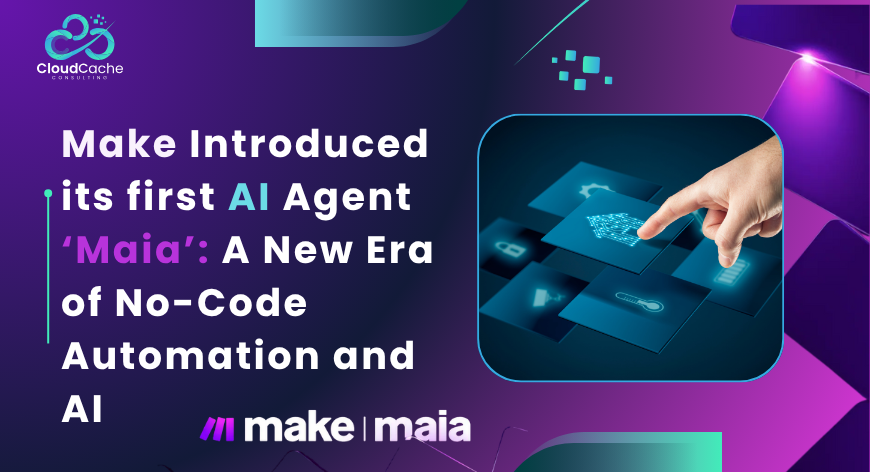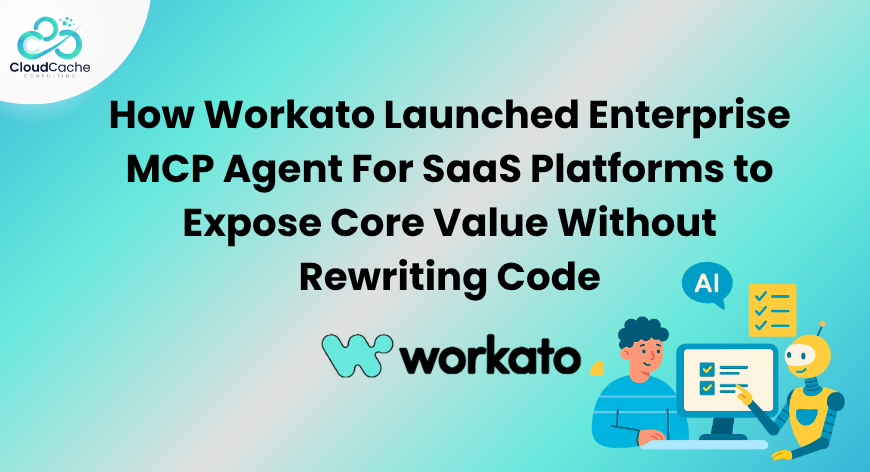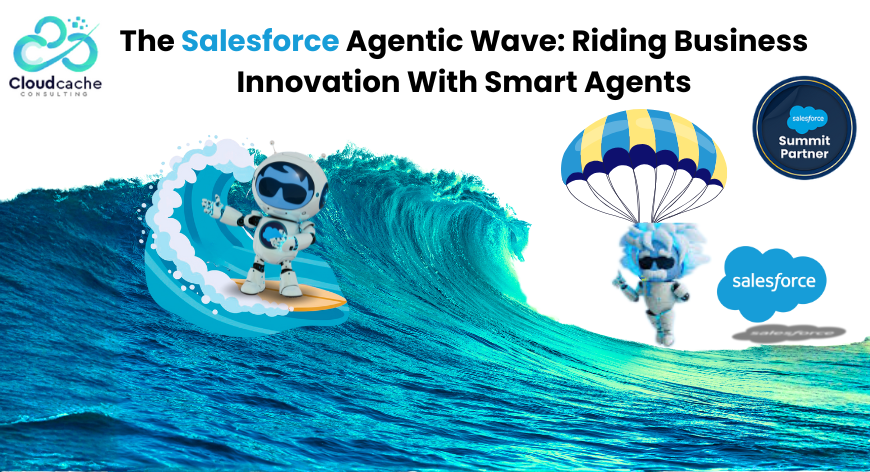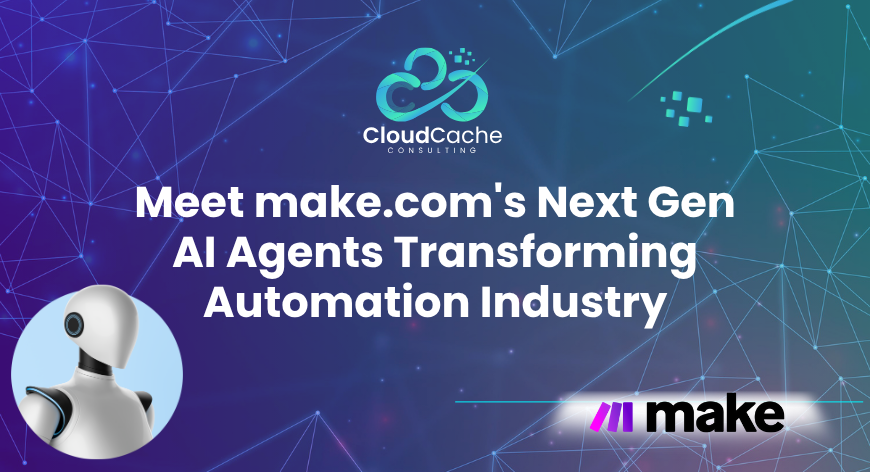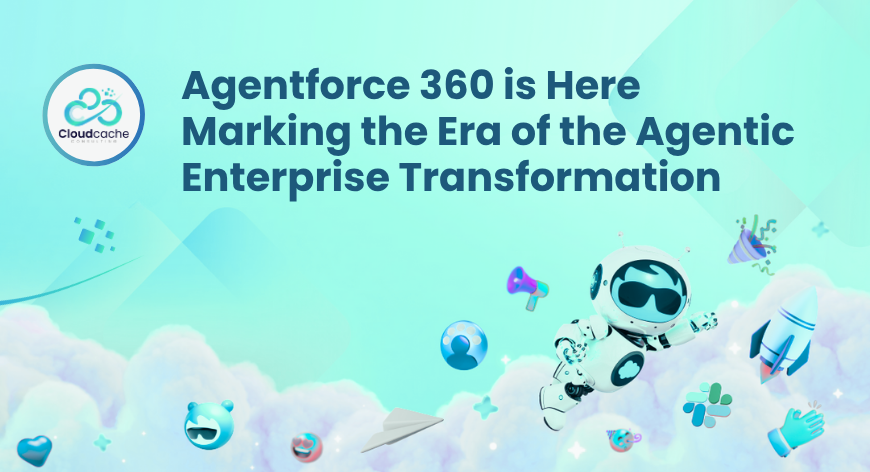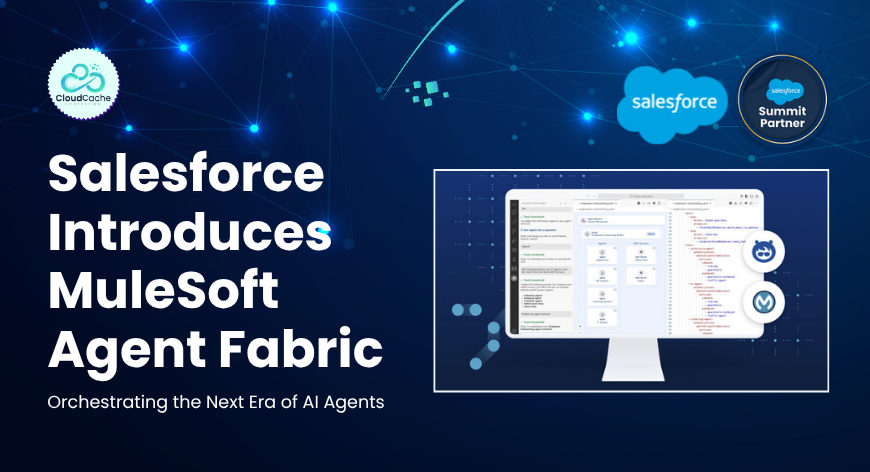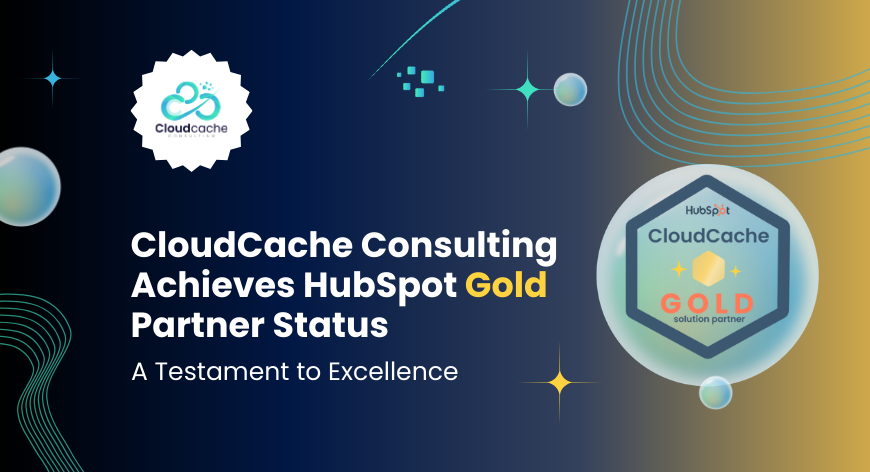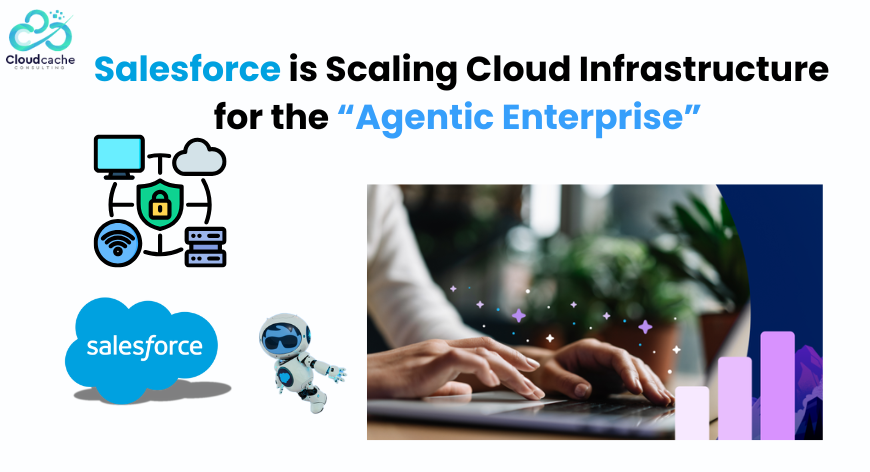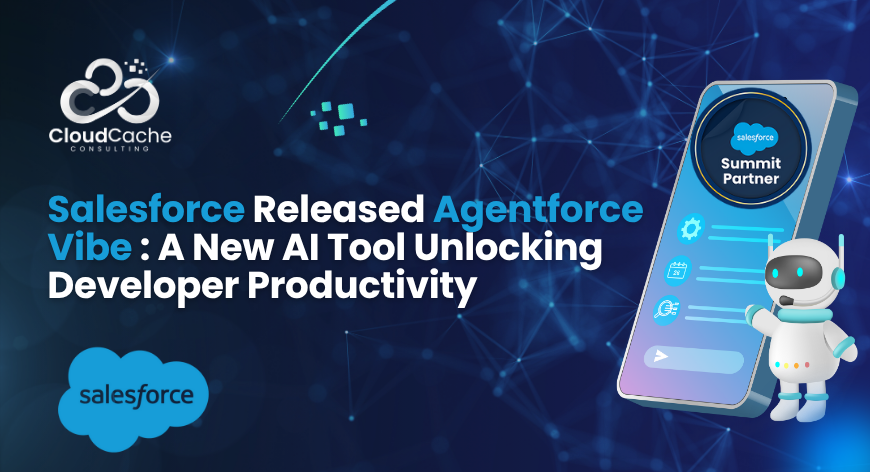
Salesforce Released Agentforce Vibe : A New AI Tool Unlocking Developer Productivity
This Month Salesforce launched a new AI tool – Agentforce Vibe. In the AI led world of enterprise software development, this recent launch is a pivotal shift in how builders collaborate, code and deploy. With this new offering, Salesforce is bringing the concept of “vibe-coding” into the enterprise arena — and doing so with a sharp focus on governance, scalability and integration rather than just novelty.
What Is Agentforce Vibes?
Agentforce Vibe is a new platform where a developer conveys high-level intent in natural language and an AI assistant translates that into working code. Until now, it has largely been used for rapid prototyping or ready to go recepies. Salesforce embed this capability now directly into its development ecosystem and apply it to production-grade business apps.
With Agentforce Vibes, developers working on the Salesforce Platform gain a full-cycle AI-powered IDE plug-in that is purpose-built for enterprise.
Key Features:
- It integrates with standard tools such as Sandboxes, DevOps Center and Code Analyzer — helping align AI-driven code generation with existing lifecycle and governance practices.
- It works in any VS Code-compatible editor (including Anypoint Code Builder, Cursor, Windsurf) — meaning you don’t have to abandon your existing tools.
- The built-in AI agent, named Vibe Codey, is designed not just to suggest code but to act like a pair-programmer: understanding metadata, generating tests, analysing security and even triggering deployments.
Why will This Help Developers
- Reduced friction: Many development teams struggle with hand-offs, rework or inconsistent code quality. Agentforce Vibes aims to smooth that by embedding AI into familiar workflows and tools.
- Shifting roles: With more of the “translate requirement → code” work handed over to AI, developers are freed to act as architects, reviewers, validators and business-logic specialists. This aligns with trends showing demand shifting from pure developer roles to roles that bridge business, tech and strategy.
Practical Use-Cases You’ll Actually Care About
Here are some scenarios where Agentforce Vibes gives real value:
- Rapid prototyping: You feed in a conversational prompt, have Vibe Codey scaffold the Apex, UI, and tests, and you’re ready to iterate.
- Greenfield apps: When starting a fresh module in your org — you can generate the scaffolding, UI, triggers, integrations in minutes rather than days.
- Conversational refactoring: You might say: “Can you simplify this method?” or “Extract this into a service class and add bulk-safe handling.” Vibe Codey understands and executes.
- Lightning Web Component generation: Creating dynamic UI/forms/controllers becomes faster, with test cases auto-generated behind the scenes.
- Governed deployments: Because the tool is connected to the sandbox, code-analysis, rollback checkpoints and governance controls exist out of the box — reducing risk.
Vital Considerations
- Ecosystem lock-in risk: Because Agentforce Vibes is deeply embedded in the Salesforce stack, you may increase your dependency on the Salesforce ecosystem. One commentary warns: “Efficiency gains may come at the price of shrinking room to manoeuvre outside Salesforce’s ecosystem.”
- Expectation vs reality: AI-generated code is powerful, but only as good as the definitions, context and review behind it. Enterprises must still invest in review, testing, architecture governance and avoiding technical debt.
- Skill shift required: Developers should adapt from writing every line of code to supervising, validating and orchestrating AI output — which may require up-skilling and organisational change.
Final Word
Agentforce Vibes is not simply another coding assistant — it’s a statement: “AI-augmented development is ready for enterprise.” For companies using Salesforce, this could significantly shift how apps, automations and integrations are built, accelerating delivery while maintaining governance.
From your vantage as a CRM services professional (and given your interest in Salesforce, HubSpot, Monday.com, Pipedrive etc.), this development presents a strong opportunity: you can position your services not just around execution, but around designing for AI-augmented delivery, ensuring quality, and helping clients evolve their developer operations for this next phase.
Ultimately, it evokes the question: As tools like Vibe Codey handle more of the “write this code” work, what becomes the role of the architect, integrator and consultant? The answer: they become more strategic, more focused on unlocking value, and less weighed down by boiler-plate. In that shift lies the competitive edge.
For more updates keep visiting CloudCache Consulting ‘s website.
